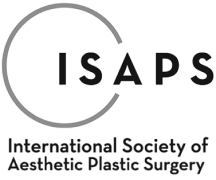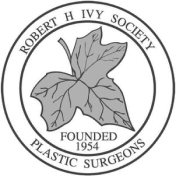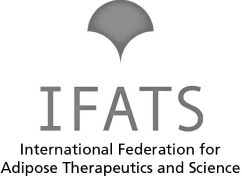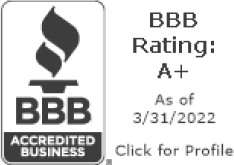Fat Transfer Breast Augmentation (Autologous Breast Augmentation)
While many breast enhancement procedures require the use of synthetic implants, there is an additional treatment available to augment the size of the breast through natural means. Fat transfer treatments have become popular in recent years, but the technique is not new. The use of a person’s own fat has been common in medicine for decades. Today, we routinely use fat cells to restore contours and volume to various parts of the body and to rejuvenate areas affected by age. Dr. R. Brannon Claytor is pleased to offer fat transfer as an option for women who are considering a natural breast augmentation.
What is a fat transfer breast augmentation?
A fat transfer procedure (or autologous fat grafting) is performed by extracting fat cells from one part of the body via liposuction and inserting them artfully into another area using injections. A fat transfer breast augmentation may be for reconstructive or cosmetic purposes. In either situation, the injection of fat cells into the breasts refines their shape through subtle enlargement, and it looks and feels like a natural breast.
People often seek a fat transfer breast augmentation to:
- Enhance the size and shape of their breast with a more natural look than implants
- Restore lost breast volume after pregnancy, weight loss, or aging
- Enjoy the dual benefit of body sculpting, as unwanted fat from areas like the tummy and thighs is extracted to use for the injections
- Have minimal scarring after surgery compared to traditional breast augmentation
Dr. R. Brannon Claytor
Dr. Claytor is board certified by the American Board of Plastic Surgery and holds over 20 years of experience as a cosmetic plastic surgeon. An innovator and teacher in the field of plastic surgery, he uses advanced techniques like the drain-free tummy tuck and deep plane facelift to streamline recovery and provide natural-looking, durable results.




Who is a candidate for fat transfer?
Many women are excellent candidates for fat transfer breast augmentation. Having good general health and an understanding of the capabilities and limitations of this technique are ideal.
Good candidates for this procedure share characteristics such as:
- An understanding that breast size may enlarge approximately 1 to 2 cup sizes.
- A commitment to maintaining a stable body weight.
- They do not smoke or are willing to quit to enable their body to heal properly.
- They have sufficient fat to harvest for transfer into the breasts.
Our Board Certified Plastic Surgeon, Dr. R. Brannon Claytor can discuss the best breast reconstruction or enhancement options for your unique goals during a personal consultation.
What are the benefits of fat transfer breast augmentation?
The primary reason many women find fat transfers appealing is that the process is completely natural. Fat cells are taken from the body and therefore pose no risk of foreign body reaction. Natural breast augmentation using fat has become more predictable as techniques have improved. A patient can expect 50 to 80 percent of the transferred fat cells to survive and permanently fill out breast shape.
Fat grafting may not require general anesthesia, and the procedure typically carries fewer risks and a shorter recovery period than breast implant surgery. The final outcome from treatment looks and feels natural because it is.
- Key Benefits
- Glossary
Natural-looking results: Fat transfer breast augmentation offers a very natural appearance, increasing the breast volume subtly.
Minimized risk of allergic reactions or implant-related complications: Since no foreign implants are used, there is a reduced risk of allergic reactions or implant-related complications.
Dual body contouring: This procedure simultaneously contours areas with excess fat, such as the abdomen or thighs, providing a comprehensive cosmetic improvement.
Minimal scarring: Incisions for fat transfer are typically small, resulting in minimal scarring compared to traditional breast implant surgery.
May not require general anesthesia: Certain patients are able to undergo this procedure with just local anesthesia and sedation.
Adipose Tissue: The medical term for fat within the body.
Autologous Fat Transfer: A procedure using the patient’s own fat to restore volume in various areas of the body.
Cannula: A thin tube used to extract or inject fat.
Liposuction (Lipo): The surgical removal of excess fat from specific areas of the body.
Lipoaspirate: The fat harvested through liposuction before it is processed for transfer.
Fat Grafting: Another term for fat transfer.
Micro-Lipoinjection: The process of injecting small amounts of fat into the tissue.
Fat Processing: The method of preparing extracted fat for transfer, often involving cleansing and filtering.
Tumescent Solution: Fluid injected into the tissue to facilitate liposuction by reducing blood loss and providing anesthesia.
Sedation: The use of drugs to calm or induce sleep in patients during surgery.
Centrifugation: The process of separating the fat cells from the tumescent solution.
Cell Viability: The health and functionality of the transferred fat cells.
Volume Restoration: The process of replacing lost volume in the face or body through the use of fillers, implants, or autologous fat transfer.
Fat Necrosis: The death of fat cells, which may occur after fat transfer.
Donor Site: The area of the body where the fat is harvested.
Recipient Site: The area where the harvested fat is injected.
Seroma: A pocket of clear bodily fluids that sometimes develops after surgery.
Hematoma: A collection of blood outside of the blood vessels, often a result of surgery or trauma.
Local Anesthesia: A type of anesthesia used to numb a specific area of the body.
Infiltration: The process of introducing fluids into tissues.
Consolidation: The stabilization and integration of transferred fat within the recipient site.
Touch-Up Procedure: A follow-up procedure to refine the results of the initial fat transfer.
Facial Contouring: The process of altering the structure of the face to create a desired aesthetic outcome.
VASER Lipo: A specific type of liposuction that utilizes ultrasonic technology to break down fat cells.
Compression Garment: A piece of clothing worn by patients post-operation to minimize swelling and support healing tissues.
Downtime: The recovery period following surgery where patients are advised to rest and limit activity.
Post-Operative: Referring to the time period following the surgical procedure.
Fat transfer breast augmentation vs. breast implants
There are distinct differences between fat transfer breast augmentation and traditional breast augmentation with implants. Both provide a safe and effective way to achieve long-lasting fullness. However, one involves the placement of foreign objects into the body where the other does not.
- Breast augmentation surgery is performed under general anesthesia. An incision may be made around the areola or along the breast crease. This results in a subtle scar. After breast augmentation, many patients return to work within a week. Soreness and tightness gradually decrease over time and can be managed with compression and over-the-counter medication.
- Breast implants can achieve much greater enlargement than is possible with fat grafting. However, breast implants do require upkeep. Women are advised to obtain MRI imaging every few years to evaluate implants for leaks or rupture. At some point, implants usually need to be replaced. With a fat transfer breast augmentation there is no need for upkeep in terms of breast
The fat transfer technique & procedure
The donor site for fat transfer is discussed and selected during our consultation for treatment. Common sites for fat extraction often include areas with excess fat like the flanks, stomach, and thighs. Before harvesting fat cells using liposuction, appropriate anesthetic is administered to numb nerve endings. Patients do not feel any pain as a small cannula is inserted through a tiny incision in the skin. The fat is collected into a sterile reservoir before being deposited into breast tissue using a cannula. Droplets of fat are introduced into areas of the breasts that have deflated or require more volume.
Listen to Stories From Dr. Claytor’s Fat Transfer Patients
In the following audio stories, Dr. Brannon Claytor engages in conversations with his fat grafting patients, providing an authentic exploration of their experiences. From their encounters with anesthesia to the exceptional results, these stories offer insights into what it truly feels like to navigate recovery and results of a fat grafting procedure.
Are there any risks to natural breast augmentation?
Fat transfer breast augmentations are streamlined so that the risks and complications associated with surgery are very low. Liposuction and fat injections may be performed with local anesthesia and IV sedation, reducing risks associated with anesthesia. The most common concern related to this procedure is that the desired outcome is not achieved. This can happen because too many fat cells fail to integrate into the breast tissue.
It is important that patients understand the limitations of fat grafting to the breasts in terms of the degree of augmentation that is possible. Our thorough consultation seeks to ensure patients have an accurate impression of their predicted results.
“My doctor lived up to his numerous positive reviews. His rating was so high that I almost thought he was too good to be true, like there had to be a catch but he was truly excellent as was his staff.”
If I lose weight will I also lose fat from my breasts?
Weight fluctuations affect fat cells in any given part of the body. If you gain or lose weight after breast augmentation with fat transfer, it is quite possible that your breasts will change shape. Maintaining a stable weight is one of the best ways to enjoy long-lasting results from fat grafting both in the breasts and in the donor area.
Will a natural breast augmentation permanently augment my breasts?
Fat cells that integrate into the breasts can be expected to remain permanently. The overall appearance of the breasts is expected to change as a result of weight fluctuations and the natural aging process.
Will I have noticeable scarring on my body after fat transfer to breasts?
A fat injection is conducted through very small incisions that need only accommodate the hollow tube for fat extraction and insertion. The same goes for the accompanying liposuction during the procedure. The resulting scars are also small and usually fade to a point at which they are nearly invisible.
Other fat transfer procedures: Facial fat grafting
Structural fat grafting isn’t only used for a fat breast augmentation. It is also a common surgical procedure for facial rejuvenation. Learn more about Facial Fat Grafting, or facial fat transfer, at Claytor Noone Plastic Surgery.
Why choose Dr. Claytor for your plastic surgeon?
Double Board-Certified for a high level of safety and precision
Chief of Plastic Surgery at Main Line Health, a top health system
Board Member of The Aesthetic Society, shaping the future of aesthetics
8x Philadelphia Magazine Top Doctor for exceptional patient care
Recognized as one of America’s Best Plastic Surgeons by Newsweek
Drain-free recovery expert for faster, more comfortable healing
Deep plane facelift innovator and global educator
Active researcher in surgical and non-surgical aesthetic advancements
Highly regarded for his surgical expertise and outcomes, as well as his dedicated follow-up care





If you are interested in a Fat Transfer and would like to see if you are a good candidate, call (610) 527-4833 or schedule a surgery consultation online with Main Line Top Doctor, Dr. Claytor. We also offer a range of face, body and breast procedures, as well as med spa treatments, to help you reach your goals. Our plastic surgery practice serves patients from Philadelphia, Bryn Mawr, Main Line and surrounding areas.
References »
Coleman SR. Structural fat grafting: more than a permanent filler. Plastic and Reconstructive Surgery. 2006 Sep;118(3 Suppl):108S-120S. doi: 10.1097/01.prs.0000234610.81672.e7.
Davis MJ, Perdanasari AT, Abu-Ghname A, Gonzalez SR, Chamata E, Rammos CK, Winocour SJ. Application of Fat Grafting in Cosmetic Breast Surgery. Seminars in Plastic Surgery. 2020 Feb;34(1):24-29. doi: 10.1055/s-0039-1700958.
Dayal A, Bhatia A, Hsu JT. Fat grafting in aesthetics. Clinics in Dermatology. 2022 Jan-Feb;40(1):35-44. doi: 10.1016/j.clindermatol.2021.08.010.
Li FC, Chen B, Cheng L. Breast augmentation with autologous fat injection: a report of 105 cases. Annals of Plastic Surgery. 2014 Sep;73 Suppl 1(Suppl 1):S37-42. doi: 10.1097/SAP.0000000000000271.
Tan SS, Ng ZY, Zhan W, Rozen W. Role of Adipose-derived Stem Cells in Fat Grafting and Reconstructive Surgery. Journal of Cutaneous and Aesthetic Surgery. 2016 Jul-Sep;9(3):152-156. doi: 10.4103/0974-2077.191672.
Nemir S, Hanson SE, Chu CK. Surgical Decision Making in Autologous Fat Grafting: An Evidence-Based Review of Techniques to Maximize Fat Survival. Aesthetic Surgery Journal. 2021 May 18;41(Suppl 1):S3-S15. doi: 10.1093/asj/sjab080.
Hanson SE. The Future of Fat Grafting. Aesthetic Surgery Journal. 2021 May 18;41(Suppl 1):S69-S74. doi: 10.1093/asj/sjab130.
Dayal A, Bhatia A, Hsu JT. Fat grafting in aesthetics. Clinics in Dermatology. 2022 Jan-Feb;40(1):35-44. doi: 10.1016/j.clindermatol.2021.08.010.
Areas Served:

Medically reviewed by Dr. R. Brannon Claytor — Updated on Mar 3, 2025


